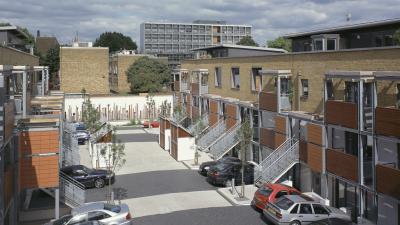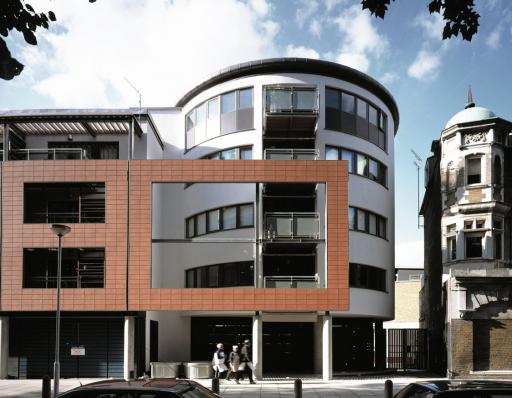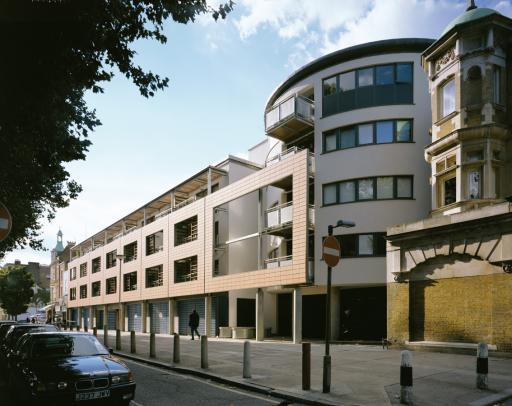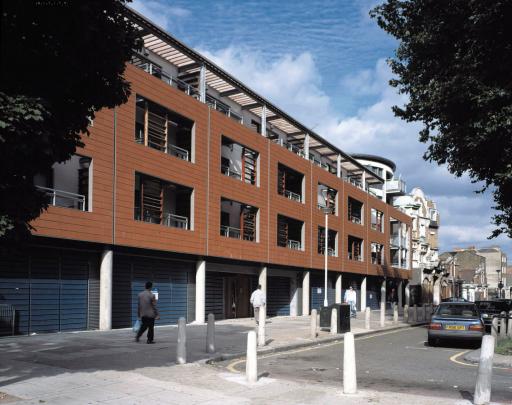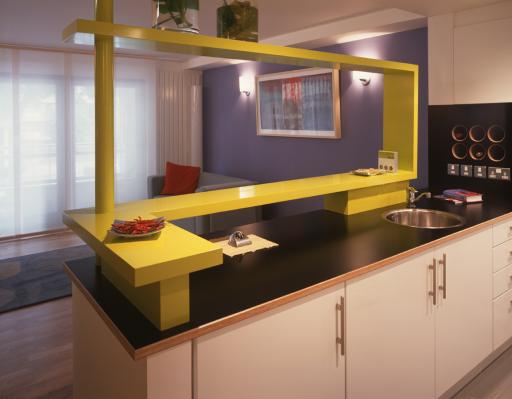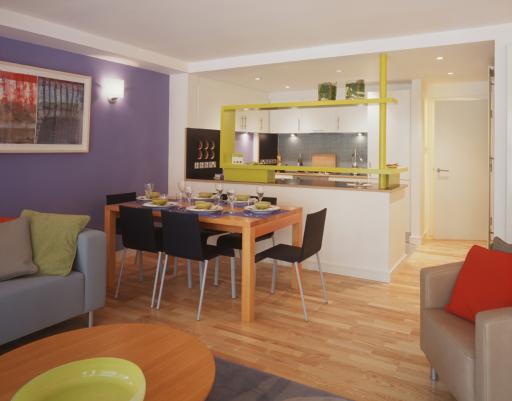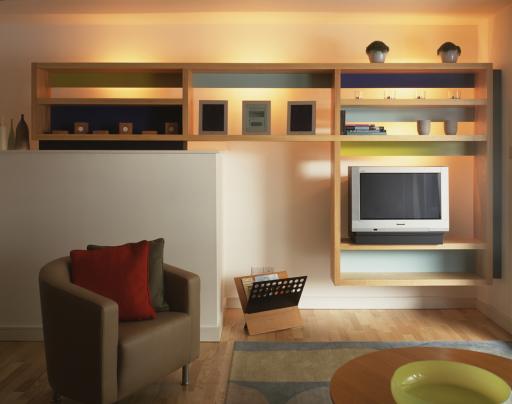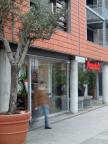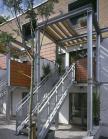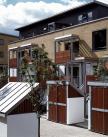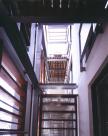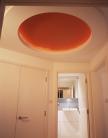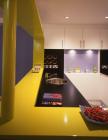The Chronos Buildings occupy a prominent urban block at the corner of Mile End Road and Cambridge Heath Road, within the historic Whitechapel Conservation Area. The site, formerly a vehicle depot, sits adjacent to the 17th Century Trinity Green Almshouses, located on a key eastern approach to the City of London. The development comprises 59 apartments, six townhouses, six retail units, and a restaurant, creating a vibrant, mixed-use environment that responds sensitively to its historic surroundings.
The scheme is arranged in three blocks, responding to the varied urban context of Mile End Road. The infill building along Mile End Road is expressed as a four-storey continuous terrace that transforms into a five-storey rotunda at the east end, both finished in white render. The two rear blocks enclose a quiet north–south-oriented mews courtyard, incorporating a double row of four-storey terraced dwellings and apartments. Vehicle parking, tree planting, and shared courtyard spaces are carefully integrated, providing both private and communal areas for residents.
A galvanized steel frame is expressed as a tectonic element over the Mile End Road frontage. Supported on round columns, it forms a loggia over the ground-floor retail units, while a terracotta screen with large rectangular openings extends over two storeys, topped by an open trellis at the roof. The terracotta screen provides a layered façade, allowing balconies for the apartments while creating shade and sound buffering. Its depth and scale maintain continuity with adjacent three-storey buildings, and the partially freestanding section with cantilevered balconies mediates the transition between the new rotunda and the historic Trinity Green Almshouses.The five-storey rotunda marks the new pedestrian entrance to the courtyard and provides a geometric transition between the new development and the historic buildings nearby. Within the site, layered zones combine stair access, bin stores, and balconies, ensuring functional and visual coherence across the mews courtyard. The design was developed with the active support of the Royal Fine Art Commission and the Ancient Monuments Society, ensuring a sensitive response to heritage constraints while delivering a high-density, mixed-use scheme.
The Chronos Buildings have been recognized as an innovative model for urban residential development, breaking away from standard developer typologies while balancing private and communal spaces. As noted by Eleanor Young, Assistant Editor of the RIBA Journal, “Proctor and Matthews has found a new model for high-density developments that breaks away from the boxes that still make up most developers’ output and it’s both private and communal.”
